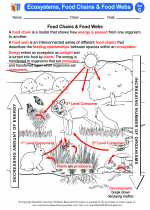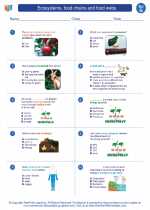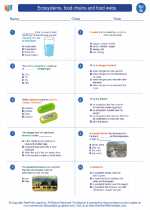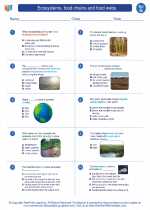Niche: Definition and Explanation
In ecology, a niche refers to the role and position a species has in its environment; how it meets its needs for food and shelter, how it survives, and how it reproduces. The niche of a species includes the physical space it requires, the type of food it consumes, the specific environmental conditions it needs, and the way it interacts with other species. Essentially, a niche is the ecological "job" of a species within an ecosystem.
Components of a Niche
A niche can be broken down into several components:
- Habitat: The specific environment or surroundings where a species lives.
- Food: The type of food a species consumes.
- Reproductive Conditions: The circumstances necessary for a species to reproduce and ensure the survival of its offspring.
- Interactions: How a species interacts with other species in its environment, including competition, predation, and mutualism.
Types of Niche
There are two main types of niche:
- Fundamental Niche: The entire range of conditions and resources that a species can potentially use and the full range of conditions under which it can survive and reproduce.
- Realized Niche: The actual conditions and resources in which a species exists due to biotic interactions such as competition and predation.
Study Guide
Key Concepts
- Understand the concept of a niche as the ecological role of a species in its environment.
- Be able to identify and explain the components of a niche.
- Recognize the difference between fundamental and realized niche.
Examples
Study examples of different species and their niches in various ecosystems. For example, how a bird species' niche may differ in a forest versus a grassland, or how a predator's niche is shaped by the presence of competing species.
Case Studies
Review case studies of specific species and their niches, including how human activities can impact or alter a species' niche, leading to ecological imbalances or extinctions.
Comparative Analysis
Compare and contrast the niches of closely related species or species within the same ecosystem to understand how they coexist and compete for resources.
Application Exercises
Engage in activities such as creating hypothetical ecological scenarios and determining the potential niches of different species within those scenarios.
Conclusion
Understanding the concept of niche is crucial in comprehending the interactions and dynamics of ecosystems. By grasping the niche of a species, we gain insight into how it fits into the web of life and how changes in its niche can have significant impacts on the entire ecosystem.
[Niche] Related Worksheets and Study Guides:
.◂Science Worksheets and Study Guides Seventh Grade. Ecosystems, food chains and food webs

 Activity Lesson
Activity Lesson
 Worksheet/Answer key
Worksheet/Answer key
 Worksheet/Answer key
Worksheet/Answer key
 Worksheet/Answer key
Worksheet/Answer key
 Vocabulary/Answer key
Vocabulary/Answer key
 Vocabulary/Answer key
Vocabulary/Answer key
 Vocabulary/Answer key
Vocabulary/Answer key
 Vocabulary/Answer key
Vocabulary/Answer key
 Vocabulary/Answer key
Vocabulary/Answer key
